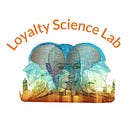Design Effective Loyalty Programs to Boost Customer Loyalty
Insights from three decades of academic loyalty program research
Is your business launching a new loyalty program? Or perhaps you’d like to revamp an existing program. In either case, you are likely to ask how you should best design the program for maximum effectiveness.
A research study to be published in the Journal of the Academy of Marketing Science analyzed three decades of accumulated scientific research on loyalty programs to offer some answers to that question. Here we bring you an annotated summary of the key findings.
Overview of the Research
Led by Professor Belli from the University of Adelaide in Australia, the research team dug deep into academic research on loyalty programs. They used a method called meta-analysis, which allows the results across different research studies to be statistically analyzed and combined to create insights.
The researchers analyzed 429 effects from 110 previous research studies. These studies spanned a wide variety of industries, including grocery and non-grocery retail, hospitality, financial services, airlines, among others.
